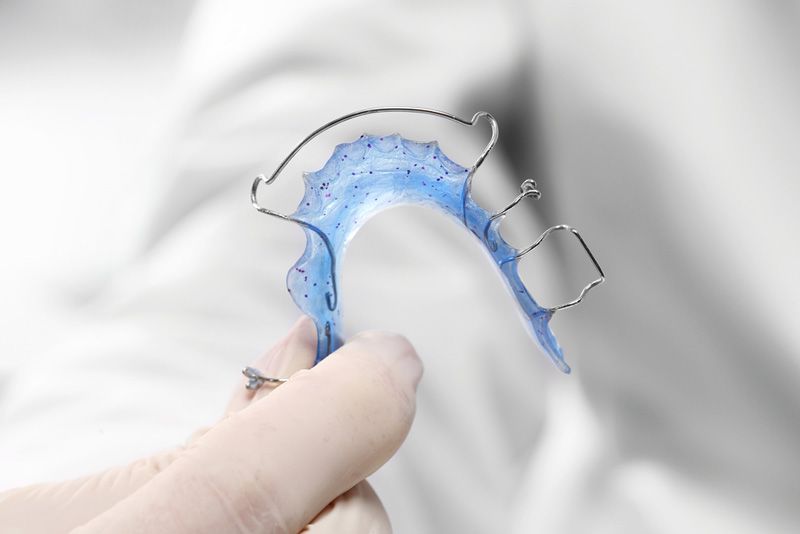Orthodontic therapy happens in close collaboration with dental medicine and oral surgery. To make this cooperation more straightforward, we have united practitioners of the three fields under one roof at the MeinZahn office. Misalignments of jaws and teeth are diagnosed and treated by our othodontist Frau DDr. Andrea Borbely.
Orthodontics: More than just straight teeth
Misalignments of teeth and jaws are mostly perceived as an aesthetic problem. But they may be much more than that. These anomalies may impede dental hygiene, effortless and physiologically correct biting and chewing, breathing and speech. And they can actually influence the entire body. Malposition of teeth causes dysfunctional strain of jaw muscles, and this in turn will communicate via the finely tuned balance of the muscoskeletal system to just about every other part of the body, causing headaches, chronic muscular tension, pain, wrong posture and joint disorders in the neck, back and hip areas – a symptom complex referred to as Craniomandibular dysfunction. Pronounced malocclusion of the jaws like undercut (retrusive occlusion) or cross bite may bring along a number of medical problems too, possibly including a stooped back, mouth breathing, frequent colds and sinus infections and even digestive disorders. These “side effects” of malocclusion and teeth malposition mean that orthodontic treatment must always take an holistic view of a patient.
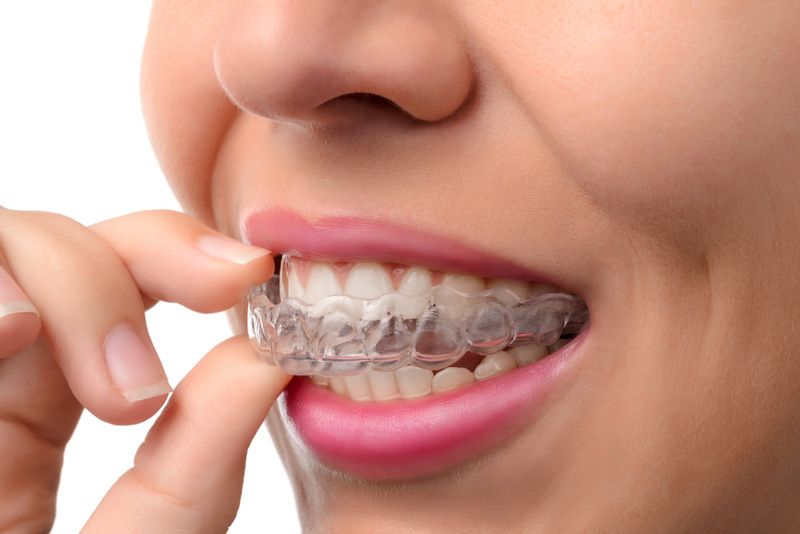
Orthodontics are not just for kids
Orthodontic treatments are most frequently performed in the time window between the 12th and 18th birthday, as soon as all permanent teeth have appeared. The reason for this: Functional orthodontic treatments that aim at changing the form of the jaw bone indeed achieve the best effects if they are performed within the growth phase.
However, modern orthodontics reach beyond our patient’s 18th birthday. There is no time limit for the correction of dental malposition as long as it is not or not strongly associated with jaw discrepancies. Slight malposition of teeth that might not have been considered treatment worthy some time ago is seen more critically today – for aesthetic as well as functional reasons. It is never too late to correct the position of healthy teeth with fixed orthodontic braces!
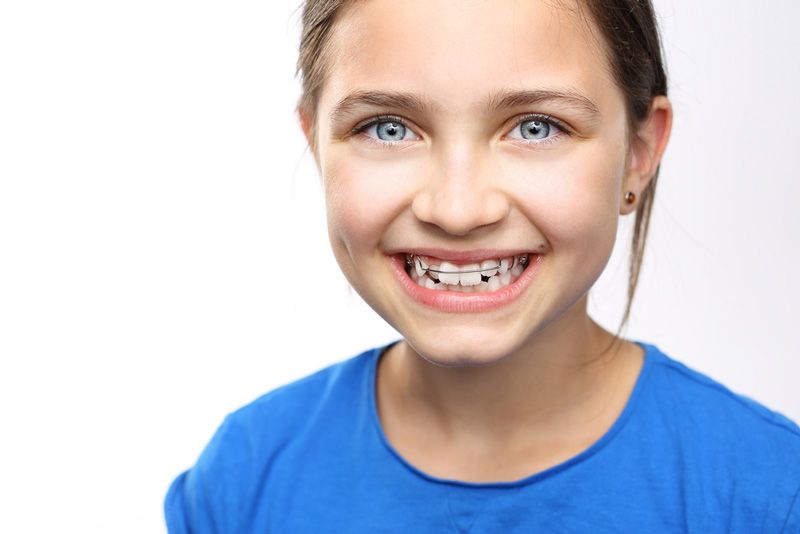
You can get further Informations about the costs of orthodontics in our download section(german only) or directly in our Practice in 1010 Vienna.
Aims and methods of orthodontic treatment
Orthodontic treatment aims at the creation of optimal functional relations in mouth and jaw. Of course, we also strive for better aesthetics of teeth and face – but those improvements are achieved more or less automatically, as a by-product of the improved masticatory function, speech and breathing.
Loose braces – main application during the growth phase
Most of the typically colorful loose braces prescribed to children and teenagers are so-called active plates. These devices can gently correct malposition even for primary teeth – however, their potential is limited to subtle position changes. Then we have the so-called functional orthodontic appliances. They, too, are removable. Their objective is less the moving of teeth, but rather the influencing of jaw growth that is out of balance for genetic or individual postnatal reasons. A prominent example for a functional orthodontic appliance is the Bionator, designed to address a compromised interplay of jaw, cheek and tongue muscles, gently redirect jaw growth and thereby normalize jaw discrepancies. For adult patients, loose retainers are employed after treatment with fixed braces or aligners to stabilize the result.
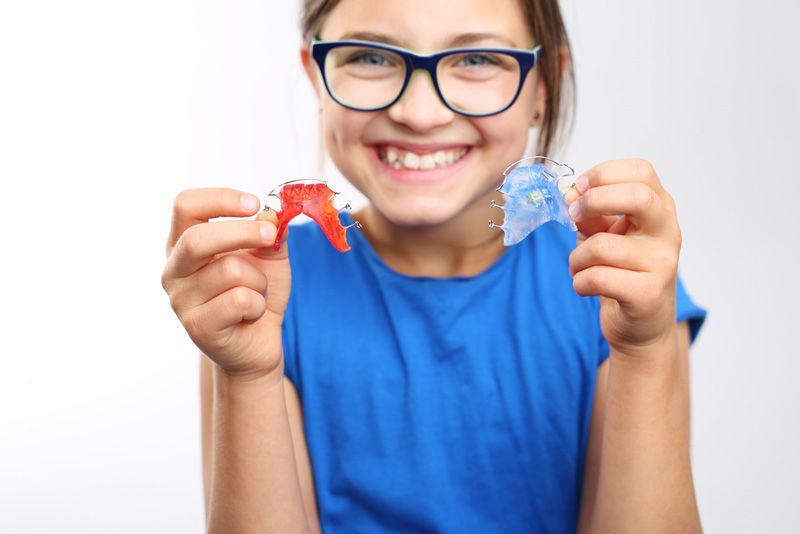
Fixed braces – effective for all ages
Fixed braces are orthodontic devices that apply a small but steady pressure on teeth that are “out of line” and thereby on the jaw bone, too. That pressure causes a loss of bone on the side that is facing the pressure, and a gain of bone on the opposing site. That way, the tooth is tilted, rotated and/or slowly moved “through the bone” into the desired position without ever becoming loose. This targeted movement of teeth is possible at every age, provided that teeth, bone and periodontium are in perfectly healthy condition. Fixed braces comprise brackets made from metal or ceramics that are adhesively bonded to the teeth and serve as guidance for a metal wire arch that exerts a small force, pressing the teeth into their correct positions. Normally, brackets and wire are fastened to the front side of the teeth. However, it is possible to inconspicuously move the whole construction to the back sides, where it pulls rather than pushes malpositioned teeth back in line. Transparent plastic splints, so-called aligners, are removable, but they function just like fixed braces. When worn continually, they can correct small malpositions while being almost unnoticeable.
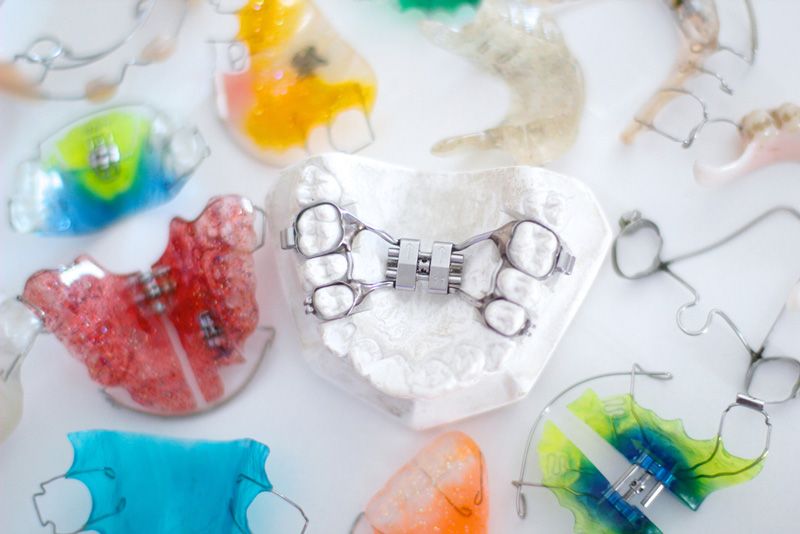
At a glance: Five important reasons to seek orthodontic treatment
- Malocclusion and misalignment of teeth hamper oral hygiene. Plaque and tartar accumulating in those hard-to-reach spots increase the risk of caries and periodontitis.
- Misalignment of teeth causes strain on jaw muscles and joints – with possibly far-reaching health consequences.
- Malocclusion can affect breathing (mouth breathing) and speech (lisp).
- Misalignment and malocclusion are aesthetic problems that can take a psychological toll on patients.
- For children, functional orthodontic treatment can redirect jaw growth, effectively preventing later health and aesthetic consequences of jaw misalignment.
